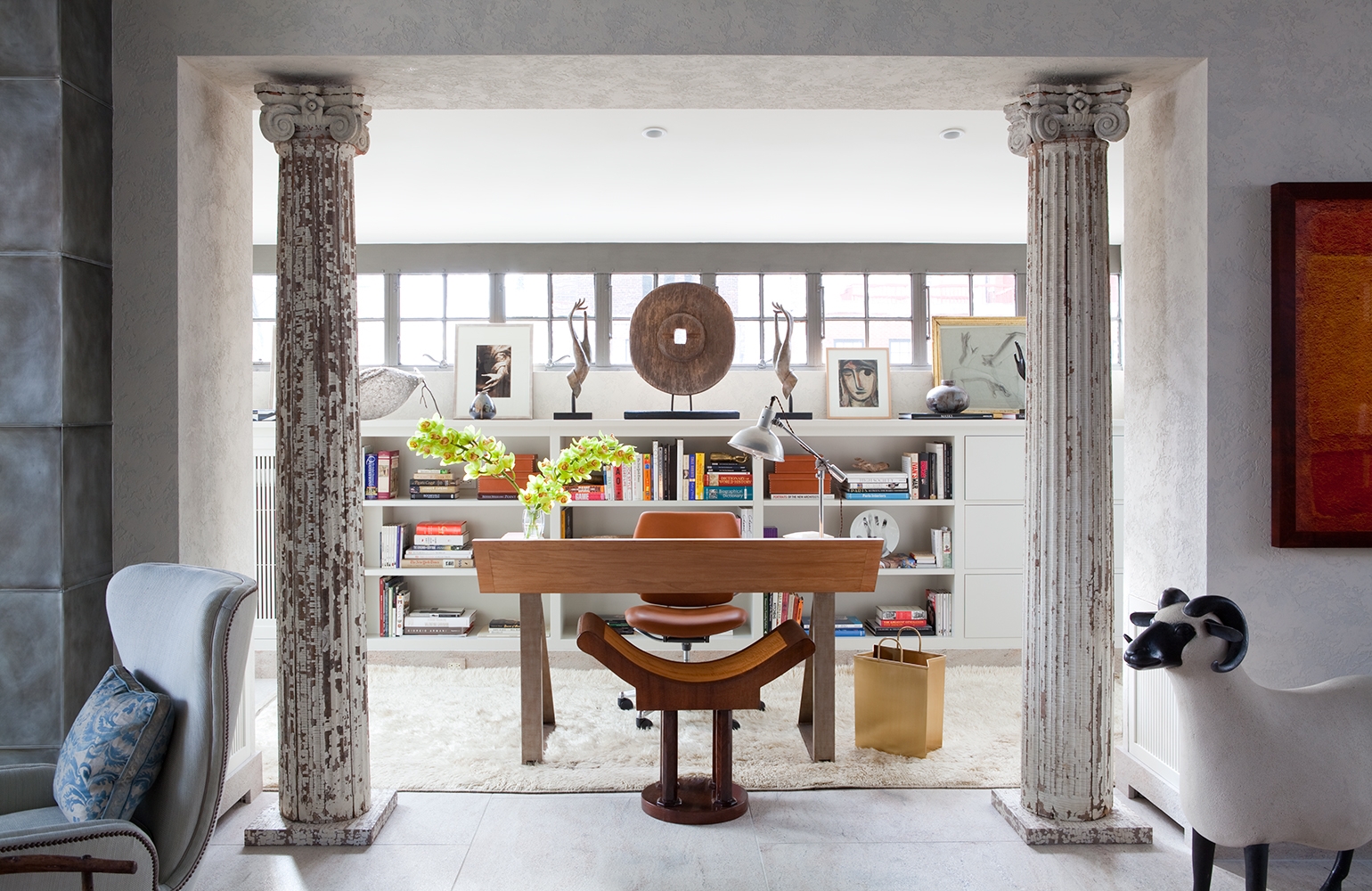She has long been considered the doyenne of classic American decorating, and has brought her great taste and innovative color and pattern mixes to everything from grand rooms to intimate table settings. Here, Bunny Williams talks about how the American family home has evolved, the different challenges of building and renovating a home, and the lessons she learned from her mentor, Albert Hadley, that still apply today.

You have long been a doyenne of classic American decorating. What have been the biggest changes in how Americans live—and want to live—since you began your career?
Bunny Williams: Just as Americans want to dress in a more casual way, they want to live in a more casual way. People want to be free in their homes. They don’t want to have to worry about installing climate control to protect museum-quality furniture. Eating in the kitchen is often preferred to being served dinner in a big dining room.

What is the single greatest lesson you learned from your mentor, Albert Hadley? Do you find the principles he taught you still apply?
BW: Albert taught us that it was always first about design, scale, and proportion, and the elevations of the room. How you combine things is personal and unique, but each item has to fit into the design plan—no matter what it is. Even with grand projects, you instill a distinctly American sense of ease and comfort.
Is it difficult to strike that balance?
BW: I always feel that there has to be a great mixture in a room—to keep it human. A basket on a Boulle cabinet; fine polished wood pieces combined with a worn, painted finish; the simple lines of a modern table placed next to a beautiful cabriole leg chair; welcoming furniture plans that allow for people to spend time being together. I like my designs to have a slightly fluid feeling, which puts people at ease.

Are there styles or periods that you find intriguing at the moment, ones that you might have not considered before?
BW: I am always looking for contemporary furniture designers who are making special, custom pieces that stand up to the best craftsmen of the past. There is hardly a style or period of furniture that I have not considered—except for heavy, ornate Victorian furniture, and golden oak. Sometimes what makes the old look new is how you combine it with something unexpected.

Are there talents among the new generation of designers whose work you find especially fresh and interesting?
BW: There is so much good, young talent coming along. As chairman of the Kips Bay Designer Showhouse over the past six years, I have been impressed by the rooms the young talents have created. I was extremely impressed by a book on Jean-Louis Deniot, whose work I found inspiring.
You are adept at pattern mixes, which, in your hands, always appear fresh, without ever being overwhelming. Is there one take-away designers should keep in mind when mixing prints and patterns?
BW: The mix of patterns and prints must seem fluid, as though it was done over a period of time. The scale of the pattern must vary, as well as the type: a floral with a geometric with an animal print; an embroidered piece with an ikat, and maybe a beautiful woven throw over the back of a sofa covered in a solid fabric; a piece of tapestry on a bench. The patterns should complement each other but not perfectly. Various shades of colors combined with neutrals. It’s great fun to do—it’s like creating a painting.

You have designed everything from furniture to tabletop items–in a variety of styles and a variety of price points. How important do you think accessories are in creating the atmosphere of a room?
BW: I feel objects give a room its real personality. It can be a great single piece of sculpture in a modern room or a tabletop filled with objects collected over a period of time and beautifully arranged. To me, a room devoid of objects is like a hotel room—a space waiting for the next guest because, in the end, there is no personality to the space. I buy interesting objects during the whole design process, as they are often hard to find.
You have written books about both your Connecticut and Dominican Republic homes. What are the lessons you learned in revamping a traditional home and building one from the ground up?
BW: There is such a difference. In renovations, one has to work within the confines of the existing building. The planning is often like solving a puzzle—fitting the pieces you want into an existing space. But sometimes the result can be more interesting. Being able to design a house from the ground up gives you the opportunity to create exciting spaces and include all the amenities, like large closets and pantries, that are so often missing from most houses. In building, you create, not adapt.
What’s next? Are you working on another book or collection?
BW: I am writing another book—which will be my last—on decorating, with all of my new projects and reflections on my career. We are always designing new pieces for Bunny Williams Home. What’s hard is deciding what pieces to introduce. There are new designs coming from our rugs for Dash & Albert, and more pieces for Ballard. Our lighting line for Currey & Co. is expanding. All of this is exciting because designing new pieces with my team is just thrilling. I am so lucky!
Get the Look
Product_id 1558134 not found














